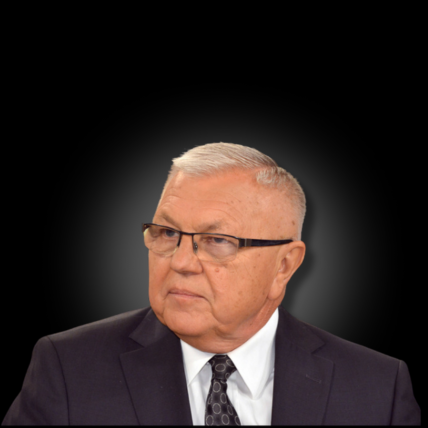The civil aerospace sector is undergoing significant change, as global pressures and sustainability demands reshape priorities. The industry has been heavily impacted by recent disruptions, with airlines facing fleet reductions and adjusting to slower recovery timelines due to grounded fleets and altered passenger demand. Compounding these challenges is the increasing urgency for sustainable aviation solutions—where technologies like hydrogen fuel, electric propulsion, and Sustainable Aviation Fuels (SAFs) are seen as critical pathways to reducing carbon emissions.
This new landscape necessitates operational flexibility, as manufacturers and airlines alike prioritize efficiency and carbon reduction to align with evolving environmental standards. Moving forward, the push towards net-zero emissions has spurred investments in low-emission technologies and alternative fuels, signaling a broader commitment to environmental sustainability. With these shifts, companies must also evaluate their supply chains and cost structures to ensure resilience, positioning themselves for both long-term stability and innovation.
At Paulson and Partners, we bring insights and strategic advisory to help our clients in civil aerospace align their operations with these emerging priorities, ensuring they are positioned for sustainable growth in a competitive and evolving market.
In today’s global landscape, the defense sector remains a crucial pillar of stability, facing a balance between traditional military needs and the integration of new technological advances. As defense spending is re-evaluated globally, companies are adapting to extended procurement timelines, shifting budget allocations, and an increasing emphasis on modern defense capabilities. Despite budgetary constraints in some regions, defense priorities continue to support robust funding for programs aimed at cybersecurity, electronic warfare, and unmanned systems.
Emerging technologies like C4ISR (Command, Control, Communications, Computers, Intelligence, Surveillance, and Reconnaissance) are also transforming defense strategies, paving the way for greater operational efficiency and strategic advantage. Alongside these developments, defense contractors and OEMs are rethinking partnerships with governmental stakeholders, strengthening compliance, and honing cost structures to remain competitive. With defense paradigms evolving, companies are focused on adapting their strategies and capabilities to meet both governmental and market demands.
Paulson and Partners assists defense companies in navigating these complexities, offering strategic insights that align with shifting defense priorities and help drive resilience in an environment defined by rapid technological advancement.
Urban Air Mobility (UAM) represents a transformative shift in aerospace and transportation, set to revolutionize urban transport with new technologies like passenger drones and air taxis. Projections estimate that over 160,000 passenger drones could be operational by 2050, positioning UAM as a cornerstone of smart urban mobility, driven by growing urban congestion and demand for sustainable, efficient travel.
However, the road to widespread adoption is complex. Companies must navigate stringent regulatory standards, city integration requirements, and airspace management, all while building reliable, compliant operational frameworks. Substantial investments in sustainable propulsion systems—such as electric and hybrid engines—are also essential to align with environmental goals and ensure long-term viability. Balancing rapid innovation with the safety and operational standards of a high-density environment remains a key challenge for UAM leaders.
This sector’s rapid growth is attracting significant investment and fostering partnerships among aerospace firms, technology startups, and government agencies. As the market develops, UAM players are tasked with innovating propulsion technologies and establishing strategic alliances to drive sustainable, scalable urban mobility solutions.
At Paulson and Partners, we work with UAM innovators to develop strategic solutions that align with complex regulatory landscapes and market demands, helping them build a strong foundation for long-term growth in this evolving market.
The space sector is witnessing unprecedented transformation, as private and public players alike push the boundaries of exploration, commercial satellite deployment, and space-based technologies. Traditionally dominated by government agencies, the industry is now increasingly shaped by private investment and innovation. This shift has introduced heightened competition as new entrants offer cost-effective solutions through agile operating models, challenging established incumbents. Governments, while still major stakeholders, are moving towards collaborative, risk-sharing models with private companies, aiming to expand capabilities without solely shouldering the financial burden.
At the same time, space holds immense potential across various applications, from telecommunications and earth observation to navigation and even climate monitoring. These emerging use cases are catalyzing growth and attracting investments into space-based infrastructure, further reinforcing the need for sophisticated, sustainable operational frameworks. In addition to satellite systems, sectors like space tourism and commercial space exploration are gradually becoming part of the broader industry landscape, signaling both opportunity and complexity.
In response to these shifts, companies involved in space must prioritize cost efficiency, regulatory compliance, and the development of scalable business models to thrive in this competitive market. Navigating the intricate regulatory and logistical challenges requires strategic planning, robust partnerships, and adaptability to rapid technological advancements.
Paulson and Partners provides strategic insights to support both public and private sector clients in structuring for success in the expanding space economy, enabling them to leverage new growth opportunities while managing risks in an evolving regulatory environment.
Get in touch
Your thoughts matter to us
let’s start a conversation!
We’re here to assist you! If you have any questions, feedback, or inquiries, please don’t hesitate to reach out.


 EN
EN DE
DE






